Chatbots represent a new trend in how people access information, make decisions, and communicate.” — Christie Pitts (Verizon Ventures)
Previously believed to be a simple tool that could only provide basic answers, chatbots are rapidly advancing in complexity. Now they can engage in conversations about various aspects of business.
The era of “rule-based chatbots” is rapidly approaching its conclusion. These chatbots, which were known as the original chatbots, were only capable of answering a limited number of simple questions. They often faced ridicule from the public due to their inability to comprehend people’s desires.
However, these bots are being swiftly overtaken by AI-driven bots that possess the ability to handle a wide variety of complex questions and engage in complete conversations with individuals.
Not only can these advanced bots converse, but the data they provide to companies has proven to be an extremely valuable asset for strategic planning.
A recent survey by Zendesk indicated that 26% of companies polled have already started using AI-driven bots, and a further 25% are in the planning stages of adding one. Conversely, a Dashly survey has revealed that half of customers prefer engaging with AI chatbots for conversation.
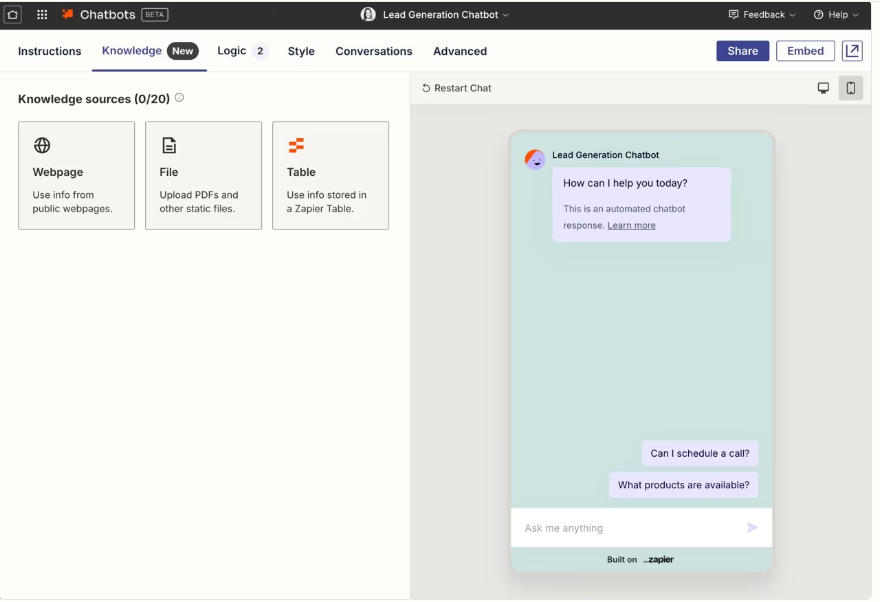
How can your business benefit from incorporating bots on your website and other platforms? And is it worth the investment? Let’s dive into the chatbot marketing benefits, how to implement them, and how to maximize their potential for your business.
What is Chatbot Marketing?
Chatbot marketing is a marketing strategy that uses “bots” – an automated messaging technique – to communicate with site or social media visitors. They are utilized to answer questions to generate leads, improve conversion rates, and provide additional support.
Using chatbots in marketing strategies allows businesses to engage and evaluate potential customers 24/7, regardless of the online availability of your marketing and sales team. Similar to using chatbots for customer support inquiries, these bots can start conversations with website visitors and evaluate leads. They can even advertise extra products or services.
The worldwide chatbot market is anticipated to grow at a compound annual growth rate (CAGR) of 23.3% from 2023 to 2030. It is not surprising to see the widespread use of bots and chatbot technology, particularly in the realm of digital marketing strategies. They can be beneficial in a ton of ways in helping to build any business.
Among other chatbot marketing benefits, they can increase customer engagement levels, help to segment site traffic in different directions, generate new leads, and give valuable data to analyze in honing future sales and marketing strategies.
Chatbot Marketing vs Email Marketing
Both chatbot marketing and email marketing are ways of offering personalized customer experiences. How do they differ, though, and is one more effective than the other?
Well, there are some similarities between chatbot marketing and email marketing. Both offer distinct ways of reaching customers, and both can involve some degree of automation.
Email marketing service refers to sending commercial messages to groups of people through email to improve sales or advertise promotions. It can be effective in providing regular reminders of your company’s products or services to people and letting them know about special deals that you might be running at particular times.
One advantage of email marketing is that it allows you to engage potential customers even when they haven’t initiated an interaction with you. It can be a useful tool for making your presence known and reminding people of what you have to offer.
Useful though email marketing might be for certain purposes, studies have shown that over 708% of customers expect a “conversational” experience when they engage with companies online. This is where the use of chatbots for marketing has clear superiority. It involves the use of different techniques to keep people engaged, which we will discuss below.
Remember, Not All Bots are the Same
Before designing your chatbot-based marketing strategy, it will be worth your while to read up about bots in general and all of the things that they are capable of.
First of all, bots are divided into different categories, depending on their overall purpose. The three main types of bots are the following:
- Informational – Informational bots are programmed using Natural Language Processing (NLP) technology, and they are capable of providing general answers to customer questions. Things such as FAQs can be addressed by informational bots.
- Personalized – Personalized bots are bots that integrate customer data that has already been collected by a company into its conversations. These bots can provide personalized suggestions and help with troubleshooting problems.
- Transactional – Transactional bots go beyond providing recommendations and actually carry out transactions on behalf of customers. This saves time for both the company and the customer.
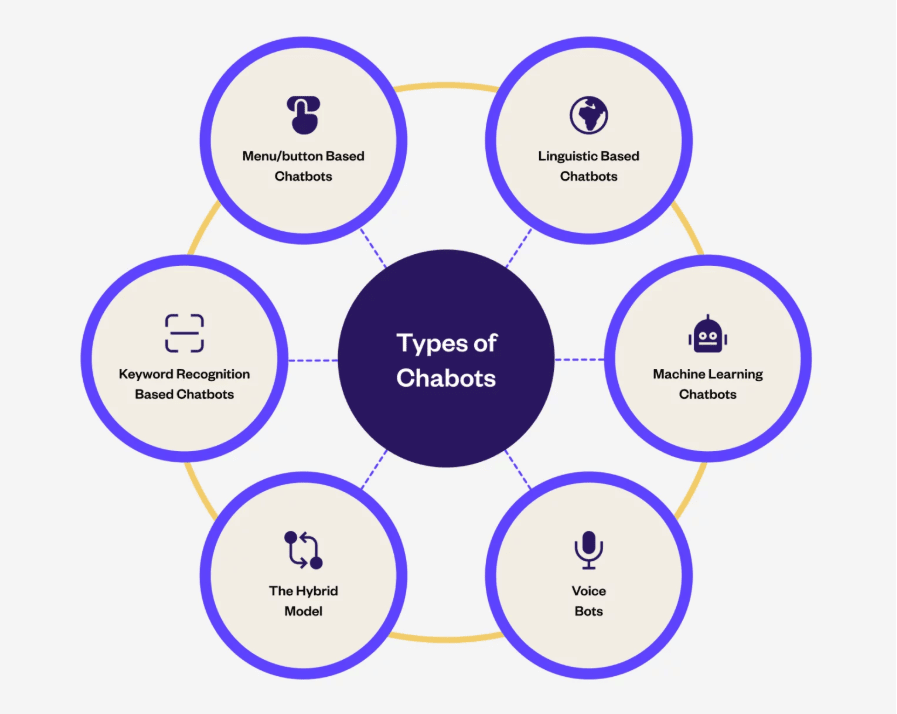
While it is possible to combine more than one of these types, it is a good idea to keep them in mind. This way you can keep yourself focused on your goals.
Beyond this, there are many differences in individual purpose, platform, bot characteristics, and other factors that you should take into consideration when creating your bot. We will discuss this further below in discussing how to create a bot-based marketing strategy.
Chatbot Marketing Benefits
There are numerous chatbot marketing benefits. Now, let’s examine some of the most significant ones in more depth.
— Conferbot (@conferbot) April 13, 2024
Employee Time Saved
One of the most evident chatbot marketing benefits is the ability to save employees time, allowing them to focus on other tasks. Bots can efficiently answer numerous inquiries, enabling employees to make better use of their time. This includes working on overall strategy or pursuing larger objectives.
An additional benefit is that chatbots can serve any number of customer inquiries at any given time. With human customer service representatives, people often have to wait for their turn to be served, and representatives can only handle one inquiry at a time. Plus, live representatives are only available during working hours.
Customer Support Time Saved
Chatbots improve customer support by providing instant answers to frequently asked questions, reducing the need for customers to wait for human assistance. Automated chatbots can handle multiple customer inquiries simultaneously, significantly improving the efficiency of managing a high volume of support requests.
They operate 24/7, allowing customers to obtain assistance at any time, eliminating the constraints of business hours and time zone differences. By automating routine tasks, chatbots free up support agents to focus on more complex inquiries, leading to quicker resolution times. Utilizing predefined workflows, chatbots quickly assess customer issues and provide relevant information, accelerating the problem-solving process.
With an increasing awareness of the advantages offered by chatbots, businesses are experiencing rapid growth in their adoption. This trend implies that a growing number of businesses will save both time and money in the years ahead. According to Juniper Research, using chatbots is predicted to enable businesses to save around 2.5 billion hours over two years.
Money Saved
Not having to pay customer service representatives also means that companies save a lot of money on operational costs and staffing. In fact, it is estimated that the use of chatbots for customer service can save businesses $8 billion a year.
For any business, it is a top priority to find ways to save money in various areas. Research shows that incorporating chatbots can help companies cut down on their customer service expenses by 30%.
These savings can translate into significantly higher profits for your business. Additionally, you can reevaluate your sales strategy to set even higher targets for your overall objectives.
Increased Customer Engagement
According to Uberall, 80% of customers have reported having a positive experience when using chatbots. The more positive the experience, the higher the customer engagement on your website. This way, AI chatbots serve as an important tool for boosting customer engagement.
Chatbots offer a high level of customization, encouraging customer engagement with products or services aligned with their behaviors and preferences. They utilize various engaging message types, such as carousels, forms, emojis, gifs, images, and embedded apps, to enrich customer interactions. This diversity enhances the overall utility of self-service options, providing a more personalized and interactive experience for users.
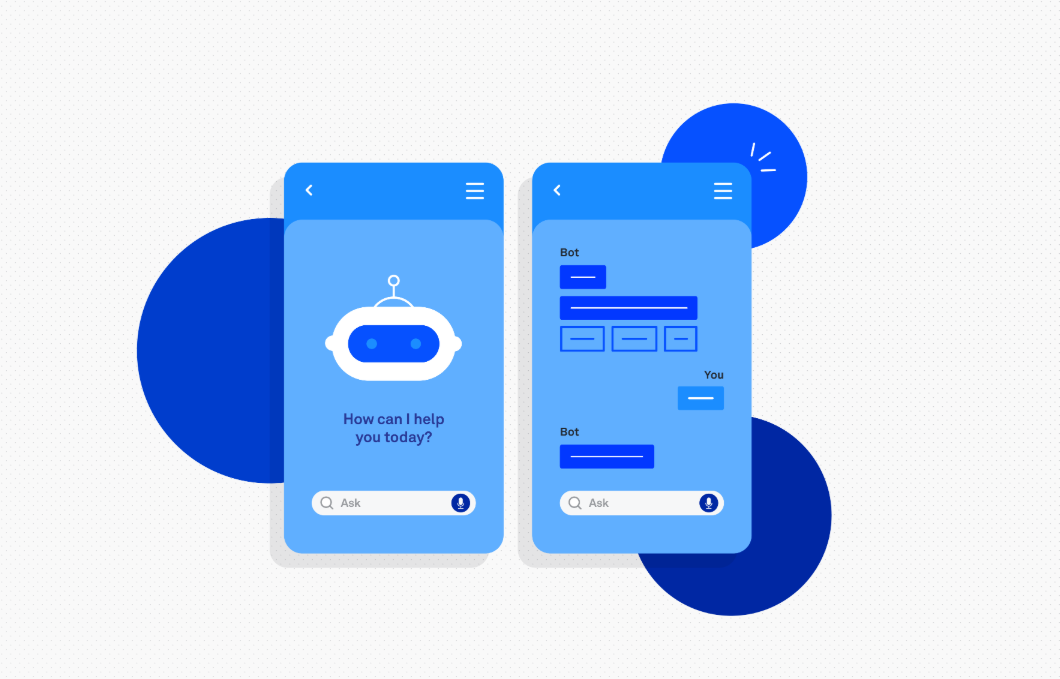
Increased Efficiency
When people make inquiries using chatbots, there is less risk of human error in receiving a response. While people used to complain during the early days of chatbots that the bots “didn’t get the question” or would lead them back to the beginning repeatedly, thanks to advancements in AI, this process has been streamlined significantly.
In fact, a recent study indicated that 70% of respondents prefer having customer questions answered by bots because of the increased accuracy that they provide.
Improved Data Accuracy and Better Understanding of People’s Needs
Many people are reluctant to say what they think when they speak to others on the phone. Chatbot conversations not only help you record and analyze data in a much more efficient manner than traditional phone-based conversations do, but they also give you additional insight into what people’s desires and frustrations are.
This information can be extremely helpful both in shaping your long-term sales strategy, as well as personalizing your customer service according to people’s preferences. People are much more likely to use services that they feel have been catered to their interests, so collecting personal data and applying it to future interactions can make a big difference in retaining customers.
Expanding Companies’ Reach, Generating Leads and Revenue
Having an online tool available to answer customer queries immediately can be enormously helpful in generating leads for new business.
👀ICYMI👀
Message received! @AnthonyHigman notes that message lead response times are becoming more of a factor in LSAs. 📬
More news here: https://t.co/YbMtTY83qw pic.twitter.com/RvaLAUNjkI
— Marketing O’Clock (@MarketingOClock) September 20, 2024
A recent study indicated that companies that responded to queries within an hour were seven times more likely to qualify the lead than those who waited longer. Therefore, having the ability to respond to many types of questions right away can make a huge difference in the number of leads you get.
With the use of chatbots, not only can you handle multiple inquiries at once, but you can also expand your reach to new geographical areas, respond to inquiries in different time zones, and significantly increase the amount of marketing conversations you have. If you are producing products that can be shipped outside of your area, this could be a huge benefit to your business.
Of course, turning leads into revenue is another question. You want to be able to utilize the data that you receive from your chatbot conversations in a way that will enable you to both increase sales from your inquiries and also revise your long-term sales strategy so that you can more efficiently draw in customers in a personalized, targeted manner.
Staying up-to-date on Important News and Trends
There are also benefits to be gained from the use of chatbots beyond helping with customer service and sales. You can program your chatbots to keep you up-to-date on news affecting your industry so that you can improve your products and services. In addition, you can stay aware of trends influencing environmental standards that could help you hone your appeal to conscientious customers.
Bots are capable of providing you with all manner of information that can be useful to your business. Think about the kinds of things that can help your business and see if you can get your bot to help inform you regularly.
How to Create a Chatbot Marketing Strategy
Nowadays, there are various places where you can purchase a chatbot template. However, a more efficient approach would be to develop your own. By building a chatbot specifically tailored to your business, you can integrate it into your overall business plan and customize it according to your company’s brand.
Wondering how to get started on this? Although the process may take some time, if you follow the steps in sequence, you will:
Decide what you want your bot to do
In the past, bots used to respond to a set of generic questions about a company’s basic departments and working hours.
Nowadays, you have the flexibility to design customized bots for various purposes. Here are a few examples:
- To automate services
- To increase customer levels
- To increase awareness of your brand or new products
- To target customer frustration and increase satisfaction
What your overall goals are will determine your whole strategy. From how you program your bot to the platform you use to how you analyze the data you receive.
Determine your channels
Chatbots have expanded beyond websites. They can now be placed in various locations, depending on your overall marketing strategy and target audience.
Before deciding where to position your bots, you and your sales team need to conduct a comprehensive analysis of the sources from which queries are originating. In fact, certain companies utilize bots on Twitter if they observe a significant amount of traffic coming from that platform. Regardless of whether it is Facebook, your PC or mobile site, or any other media channel you utilize, incorporating a bot can be highly beneficial.
Recent studies show that not many businesses are yet integrated enough to include a common bot system on all of their platforms. One study indicated that only a third of companies have an omnichannel bot presence on more than one platform, and only 17% have a truly integrated system on all of their platforms. Therefore, by successfully implementing a multi-platform system with your bots, you will make your company stand out from the crowd.
Another thing you should consider is how present you want your bot to be on any one platform. Core DNA is an example of an ecommerce and CMS site that makes its bot present on every page of its site. How much of a presence you give your bot depends upon what you want the user experience to be like for your site visitors.
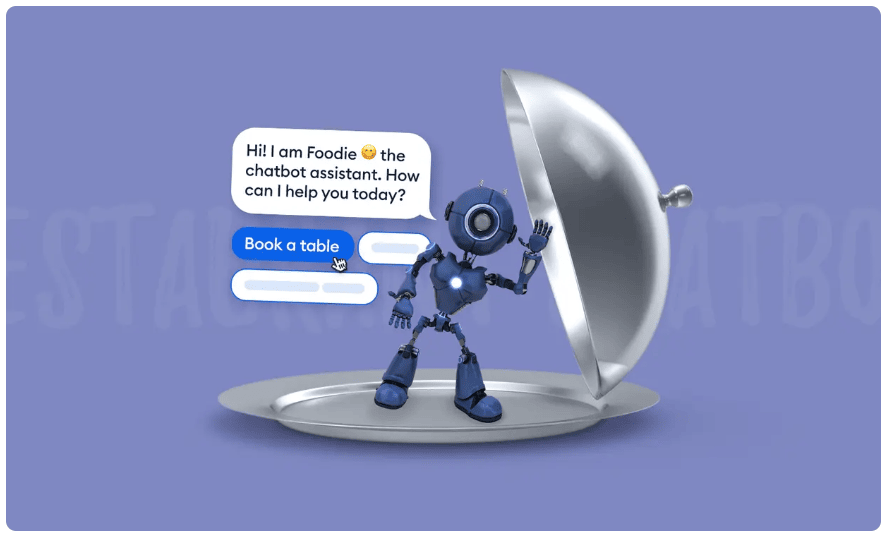
In addition, certain industries are developing industry-wide standards for bots. For example, restaurant bots are becoming popular ways of making reservations on many different platforms. And beyond simply using them for this purpose, the bots also make recommendations and collect feedback.
Give your bot a character
To make your conversations as personalized as possible, it is important to develop a unique personality for your bot:
- Give your bot a name. It might sound silly, but this does a lot in the personalization process. The more people feel like they are talking to a person, the more engaged they are likely to be. And if your business sells specialty items – items from a particular part of the world, directed towards kids, etc – you can give your bot a name that represents the type of things you sell.
- If your bot will have a voice, think about the kind of voice that would best portray your message. You might think that there is a generic standard that should be used widely by companies nationwide. But this isn’t necessarily true. As with the name, it pays to think about the kind of voice – and possibly even accent – that your bot will have. If you’re selling Stetson hats, you could give your bot a cowboy persona and bring your brand alive to potential customers.
- Along with your bot’s accent, you should think about the type of language that it will use. Again, this could be regional, age-specific, or based on other aspects of your business. If you’re selling women’s beauty products, you should think about the type of messaging that would appeal to women wanting to make themselves more beautiful, just as commercials and other types of advertising do.
There are a lot of bot examples that you can look at in considering ideas for your own. Consider your industry specifics, as well as the individual theme of your business. You should also check out your competition to see what they are using.
Think about your opening message
Part of maintaining brand consistency means having a really compelling opening statement that will pique customers’ interest and make them want to engage with your bot. Again, you want a message that will relay YOUR business’ message, not just a generic message. If you want to list options for the types of questions people might ask, you should base them on your research of inquiries you have received in the past. Question categories might include:
- Text input, for open-ended questions (“How can I help you today?”)
- Number input (“How many items did you order?”)
- Confirmation (“Are you writing about a lost item?”)
- Multiple choice (“Working hours,” “Location,” or “Directions?”)
Some companies initiate conversations by asking users for their names. Pipeline Ops, for example, asks users for their first name, then responds by saying, “Nice to meet you, X. How can I help you today?”
Map out potential conversations
Once you’ve determined how your bot will initiate conversations with users, you then need to determine the kinds of directions the conversation might go. To systematize the process, you should map out different possibilities based on your products or services, and whatever the particular focus of your bot might be.
Decision Tree Mapping
Chatbot mapping is sometimes referred to as “decision tree mapping.” This includes the following considerations:
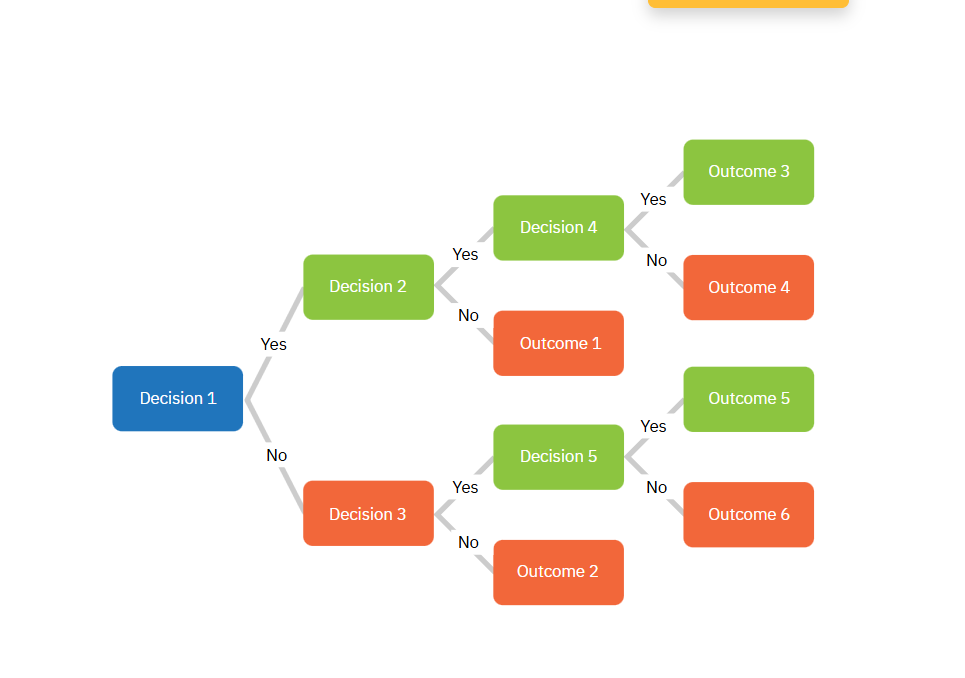
- Your existing customer knowledge base and FAQs. These can be starting points for your bot conversations
- Chat logs. Even if you haven’t used chatbots before, you should have logs of chats, emails, and other forms of communication with customers.
-
- Fish out strings of conversations and extract the critical elements of them.
- Pay attention to the timeframes of your customer interactions. Questions might change over time, so you should look for differences in the popularity of certain kinds of inquiries as time goes on.
- As you create your “tree,” start with its “trunk” and work up from there. In other words, start with the most fundamental questions people might ask and base subsequent questions accordingly. For example, you could base a series of questions on the following kinds of sequences:
-
- Sales-related questions
- Shipping questions
- Returns/Exchanges
- As you go along, create as many responses as you can to any given “branch.” For example, you can respond to a return request with several types of responses:
-
- “Is the item the right size?”
- “Is the item damaged?”
- “Is the item the right color?”
- “Did the item fail to meet your expectations?” > “Please explain why.”
- A follow-up branch to a return request could be different questions about compensation:
-
- “Would you like an exchange or a refund?”
- “Would you like a different size?”
- “Where would you like your exchange shipped to?”
Keep in mind that there are only a certain number of questions that may be answerable in any given bot chat. At some point, the bot should be programmed to revert the query to a live representative because not all queries can be addressed by pre-programmed messaging. While you want to be efficient and quick, you also want to keep in mind that customers are human beings with unique needs.
Provide Call to Action buttons
If you are guiding customers through a shopping experience, provide Call to Action buttons. If a customer has inquired about a particular item, you can have your bot take the customer to the item page. Then take the customer to the checkout page to make the buying process easier:
“Is this the selection you want?”
“Yes”
“Go to cart” [Button]
You can create CTA buttons for different purposes, not only sales. Think about the role of your bot and what types of things you might want it to automate.
Collect and analyze your chat data
Once you’ve started using your bot, you can collect the data from it. You can use it for designing your future strategy. As mentioned above, one of the most useful aspects of having chatbots is that they collect data on customer interactions that can be stored in your system automatically. Using a professional analytical tool to examine the trends in conversations can be very instrumental both in refining your bots themselves, as well as in shaping your overall sales strategy in the future and helping to personalize your customer interactions.
Chatbots are Maturing All the Time, Use Them to Your Advantage
Thanks to constantly increasing advancements in AI, chatbots are getting smarter all the time.
This can be advantageous for your business. However, it’s essential to recognize that your competitors are likely incorporating chatbots into their strategies as well. To maintain a competitive edge, it’s crucial to stay vigilant consistently refine your chatbot marketing strategy, and make use of as many chatbot marketing benefits as possible.
Strategic usage of chatbots can significantly enhance your ability to support your staff in sales endeavors, streamline overall performance, and substantially boost customer satisfaction levels. By staying proactive in adapting and optimizing your approach, you position your business to thrive in a landscape where chatbot technology is becoming increasingly prevalent.